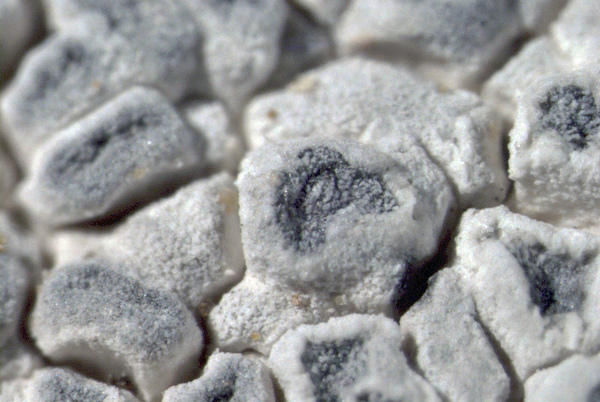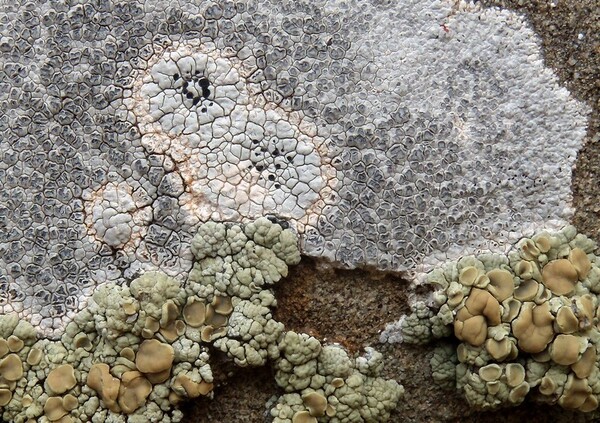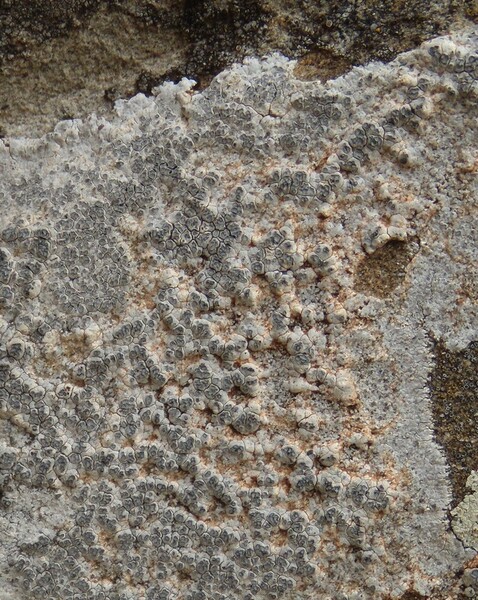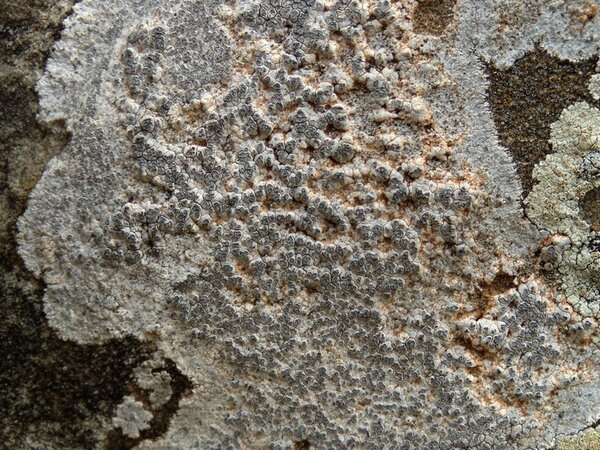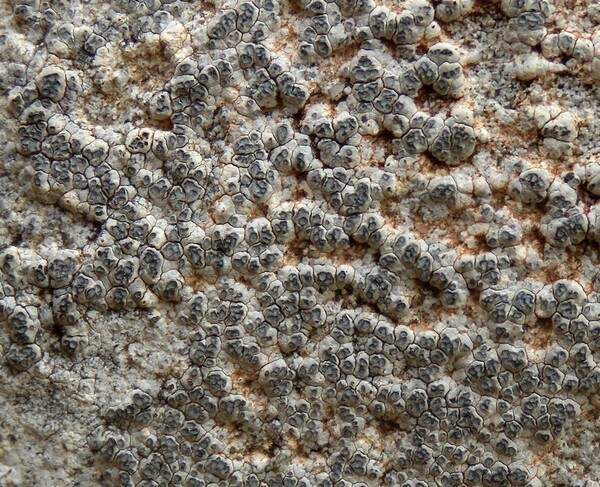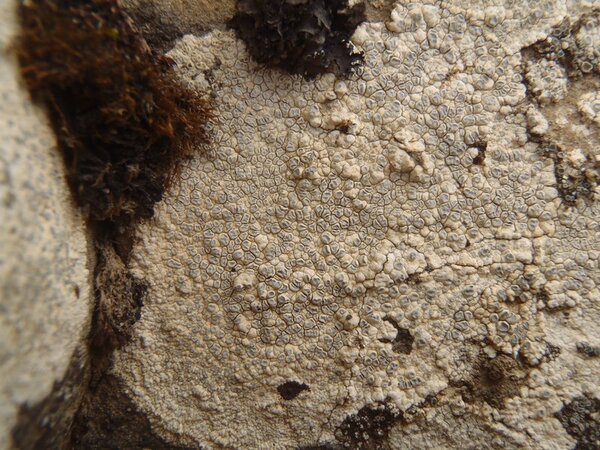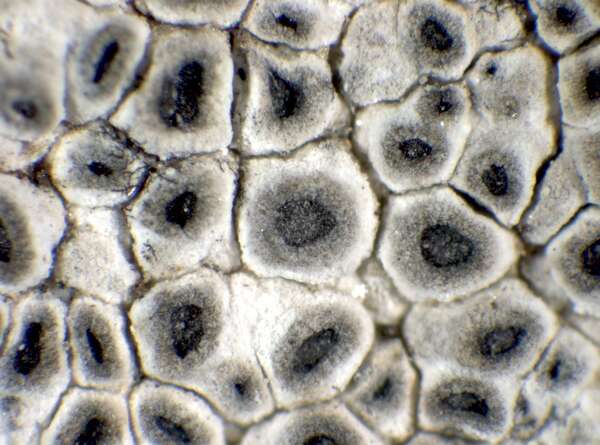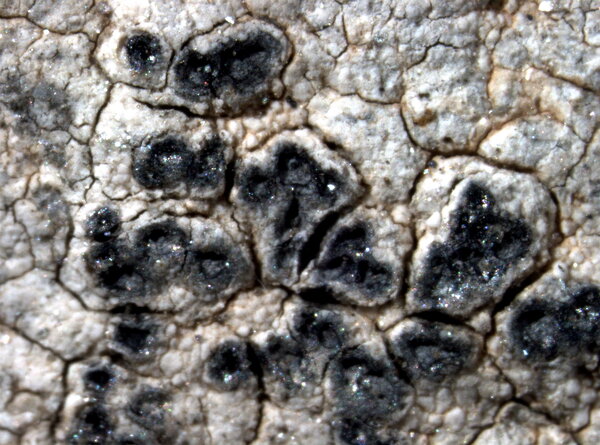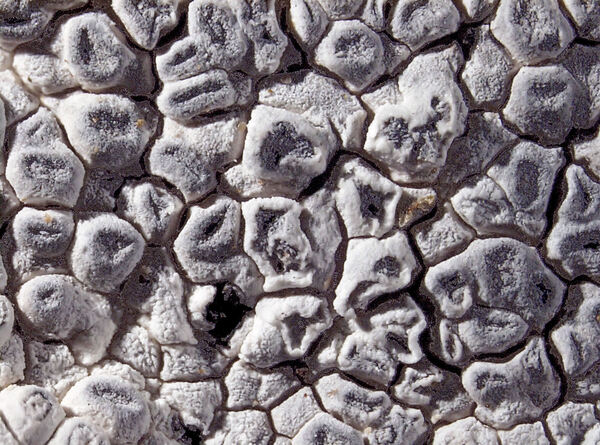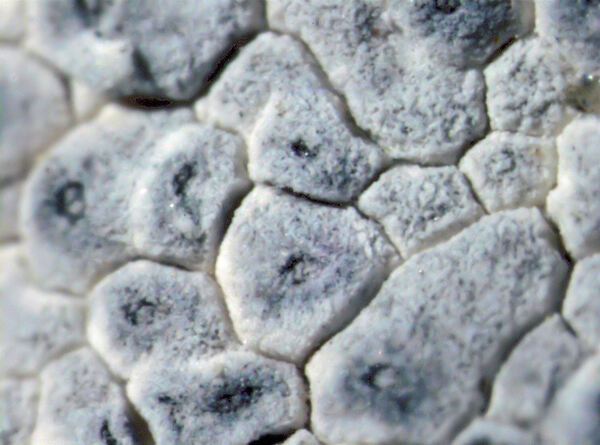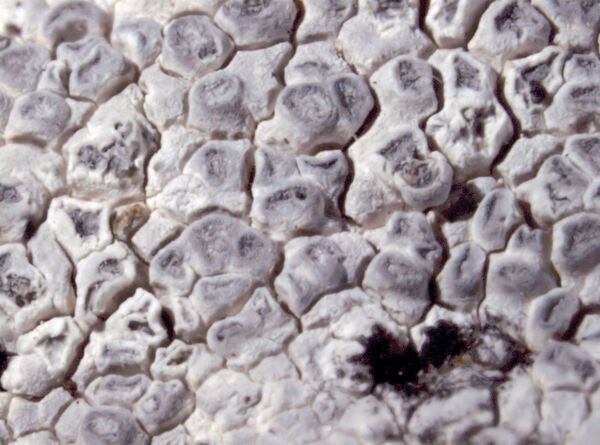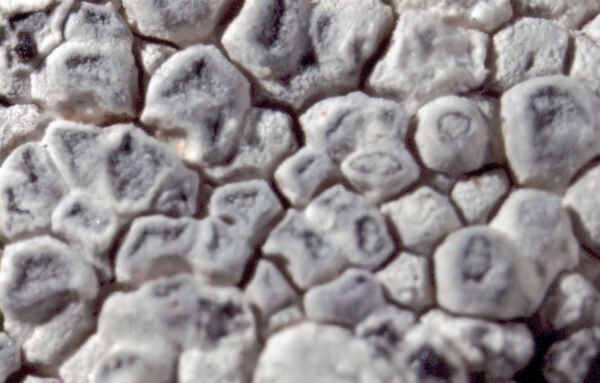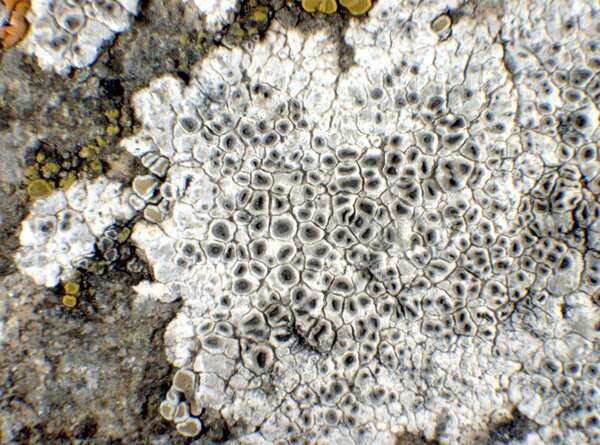Aspicilia candida (Anzi) Hue
Nouv. Arch. Mus. Hist. Nat., Paris, 5 sér., 2: 64, 1912 (“1910”). Basionym: Aspicilia polychroma var. candida Anzi - Cat. Lich. Sondr.: 59, 1860.
Synonyms: Aspicilia marcii B. de Lesd.; Aspicilia rosacea Hue; Lecanora candida (Anzi) Nyl.
Description: Thallus crustose, episubstratic, up to 0.7 mm thick, continuous to slightly rimose-areolate, more or less pruinose, chalky white, cream-white or pale bluish-grey, forming up to 15(-20) wide orbicular patches, often delimited by a black prothallus. Areoles flat to convex, the marginal ones often elongated and more or less radiating. Cortex 50-60 µm thick, filled with crystals; medulla white, I-; algal layer not extending below the hypothecium. Apothecia lecanorine-aspicilioid, round, 0.2-0.8 mm across, at first immersed in the thallus and more or less crateriform, then slightly protruding, with a concave to flat, black but most often grey-pruinose disc, and a 0.15-0.3 mm thick, prominent, farinose-pruinose thalline margin. Epithecium brownish green, N+ emerald green; hymenium colourless, 70-85 µm high, I+ reddish brown; paraphyses coherent, submoniliform, the apical cells to 3 µm wide; hypothecium colourless to pale yellowish brown, 35-45 µm high, I+ blue. Asci 8-spored, clavate, the thin outer coat K/I+ blue, the wall and apical dome K/I-. Ascospores 1-celled, hyaline, broadly ellipsoid, 13-25 x 9-18 µm, thin-walled. Photobiont chlorococcoid. Pycnidia black, immersed. Conidia curved, 14-22 x c. 1 µm. Spot tests: thallus K- or very rarely K+ yellow, C-, KC-, P-; apothecial margin K+ pale yellow to yellowish brown. Chemistry: substictic acid as the major compound, mostly limited to the margin of the apothecia.
Growth form: Crustose
Substrata: rocks
Photobiont: green algae other than Trentepohlia
Reproductive strategy: mainly sexual
Commonnes-rarity: (info)
Alpine belt: rather rare
Subalpine belt: rather common
Montane belt: very rare
Dry submediterranean belt: absent
Humid submediterranean belt: absent
Padanian area: absent
pH of the substrata:
1 2 3 4 5
Solar irradiation:
1 2 3 4 5
Aridity:
1 2 3 4 5
Eutrophication:
1 2 3 4 5
Poleotolerance:
0 1 2 3
Altitudinal distribution:
1 2 3 4 5 6
Rarity
absent
extremely rare
very rare
rare
rather rare
rather common
common
very common
extremely common
Loading data...
Occurrence data
Predictive map
Growth form: Crustose
Substrata: rocks
Photobiont: green algae other than Trentepohlia
Reproductive strategy: mainly sexual
Commonnes-rarity: (info)
Alpine belt: rather rare
Subalpine belt: rather common
Montane belt: very rare
Dry submediterranean belt: absent
Humid submediterranean belt: absent
Padanian area: absent
pH of the substrata:
| 1 | 2 | 3 | 4 | 5 |
Solar irradiation:
| 1 | 2 | 3 | 4 | 5 |
Aridity:
| 1 | 2 | 3 | 4 | 5 |
Eutrophication:
| 1 | 2 | 3 | 4 | 5 |
Poleotolerance:
| 0 | 1 | 2 | 3 |
Altitudinal distribution:
| 1 | 2 | 3 | 4 | 5 | 6 |
Rarity
absent
extremely rare
very rare
rare
rather rare
rather common
common
very common
extremely common
Loading data...
Occurrence data
Predictive map


